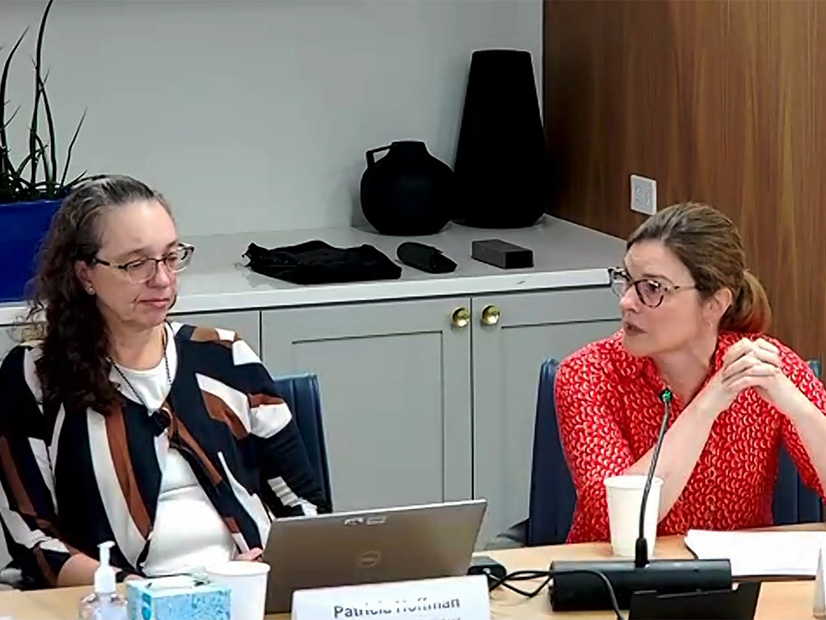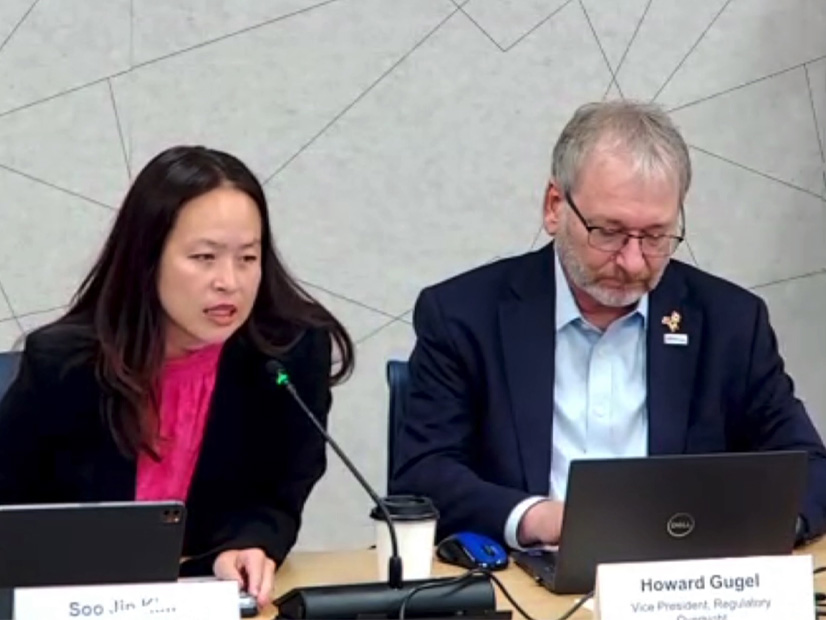
FERC Commissioner Mark Christie praised NERC CEO Jim Robb as a “revolutionary” at the organization’s Board of Trustees meeting this week.
The ERO’s board and Member Representatives Committee met in Washington, D.C., via a hybrid format, with trustees, members and guest speakers (except Christie) attending in person and all others joining by phone or the internet.
Introducing Christie, Robb called him “a very straight-talking voice for reliability and consumer issues” who has provided “stalwart support of [NERC’s] mission.” Christie returned the compliment in his remarks, recalling his description of Robb at a meeting of the Gulf Coast Power Association this year.
“I said [that] if you’ve seen Jim Robb, you probably don’t think he’s a revolutionary. But Orwell said that telling the truth in a time of universal deceit is a revolutionary act. And I admire Jim Robb for telling the truth about the challenges that we’re facing in reliability,” Christie said, adding that other stakeholders — including Manu Asthana and John Bear, CEOs of PJM and MISO, respectively — are revolutionaries for the same reason.
Christie described the power grid as “a huge lake [that] is only six inches deep,” with grid operators responsible for ensuring the depth stays consistent at all times by balancing incoming water (supply) with outgoing water (demand). Citing the growing electric demand from sources such as data centers and artificial intelligence services, he warned that many end customers and government stakeholders still do not understand the complexity of the ongoing move from traditional electric generation to weather-dependent resources like wind and solar.
“You can’t get away from the reality that with the kind of demand increases that we’re seeing already and that are projected just in the next three [to] five years, there’s going to have to be a substantial increase in generation resources. And at the same time, we’re going in the opposite direction by retiring substantial generation resources that are dispatchable,” Christie said. He asked NERC to “continue to tell the truth,” even though “there are a lot of special interest groups that don’t want to hear it,” because “the truth will track us down.”
Christie’s fellow Commissioner Allison Clements spoke after him. While she also called on NERC to be an “honest broker,” she added that “the truth requires nuance [in] a time of rapid change.”
Clements ran down the challenges facing the grid — such as aging infrastructure, growing incidence of extreme weather events, and cyber and physical security threats — but said the changing times present opportunities for NERC and FERC to work together to shape and strengthen the system for the future.
In the case of generation retirements, for example, she acknowledged Christie’s concerns about the loss of dispatchable generation but pointed out that not all traditional generation is dispatchable, and grid planners can work together to determine which resources can be retired safely.
Reminding trustees that NERC commands significant respect both in the industry and in policy-making circles because of its reputation for honesty, with lawmakers taking the ERO’s reliability assessments as “gospel,” Clements urged NERC to continue speaking out on the developing challenges to help build momentum for the needed changes.
“There’s a lot going on, but there’s more to do, and it’s the responsibility of the regulators and [NERC] to … get behind the easier, quicker stuff, and then get up to what’s a little bit harder,” she said.
New CIP Standards Accepted
The board passed a handful of action items at this week’s meeting. In addition to accepting the ERO’s 2023 audited financial statements and statement of activities for the first quarter, trustees voted to approve the work of two standards development projects.
Introducing Project 2016-02 (Modifications to CIP standards), NERC Vice President of Engineering and Standards Soo Jin Kim explained that the project — one of NERC’s longest — was intended to address “a need … to provide for virtualization and virtualized technologies to be implemented into our cyber systems.”
Nearly all of NERC’s Critical Infrastructure Protection (CIP) standards were affected by the changes, which Kim said were designed to be “future proof [and] backward compatible” with a wide range of existing and potential future technologies.
Next came Project 2023-03 (Internal network security monitoring), which saw the board accept proposed standard CIP-015-1 (Cybersecurity — INSM). The standard will require registered entities to implement one or more documented INSM processes on grid cyber systems considered to be high impact, as well as medium-impact systems with external routable connectivity.
The board and MRC’s next meetings will be held Aug. 14-15 in Vancouver, Canada.


